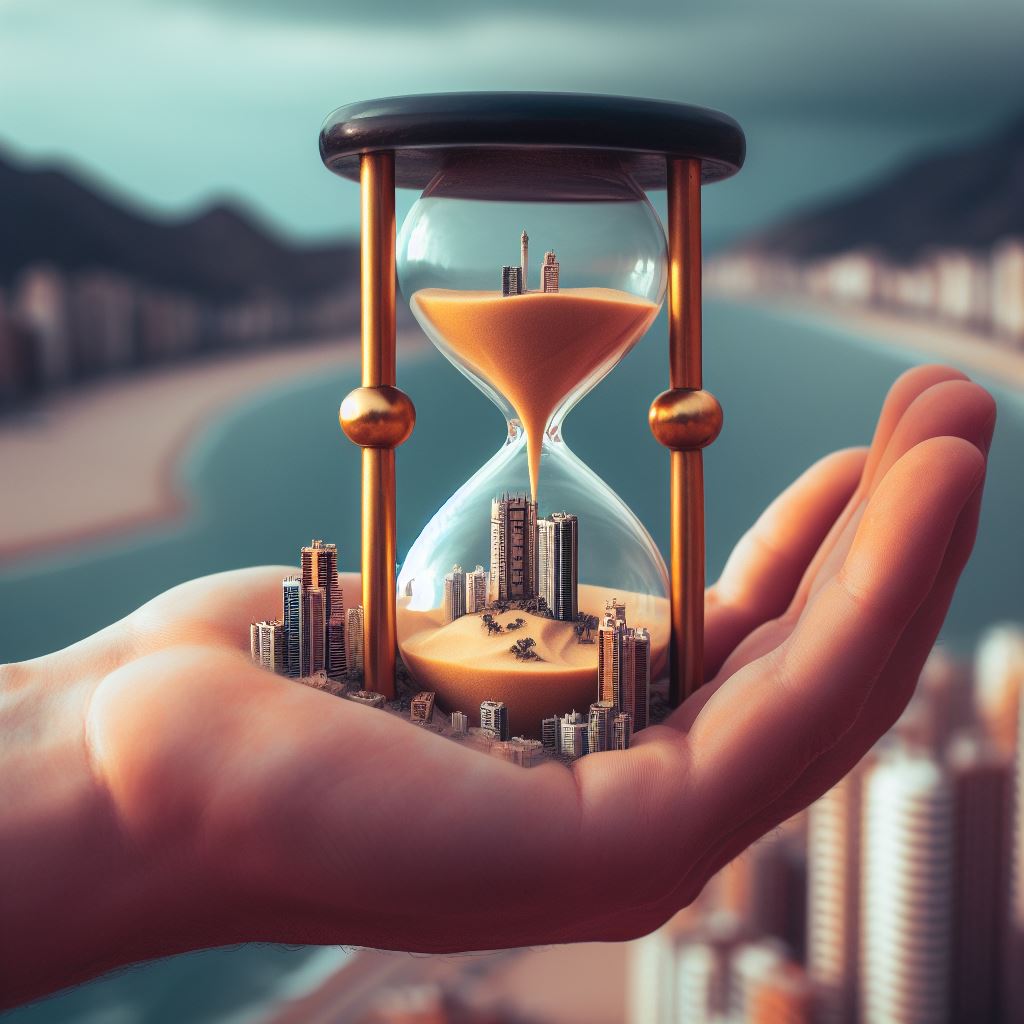
Benidorm, located on Spain’s Costa Blanca, is a city with a fascinating history that has shaped its identity over time. From its ancestral origins to becoming an emblematic tourist destination, the history of Benidorm is a journey through the centuries.
Benidorm, known for its golden sandy beaches and vibrant nightlife, has deep historical roots dating back to prehistoric times. Its cultural importance and evolution over the centuries make it a point of historical interest in the region.
Index
Prehistoric Origins
The archaeological remains in Benidorm show evidence of a human presence since the Bronze Age. Cave paintings and archaeological remains show prehistoric settlements, revealing the antiquity of the region.
Roman and Arab Influences in the History of Benidorm
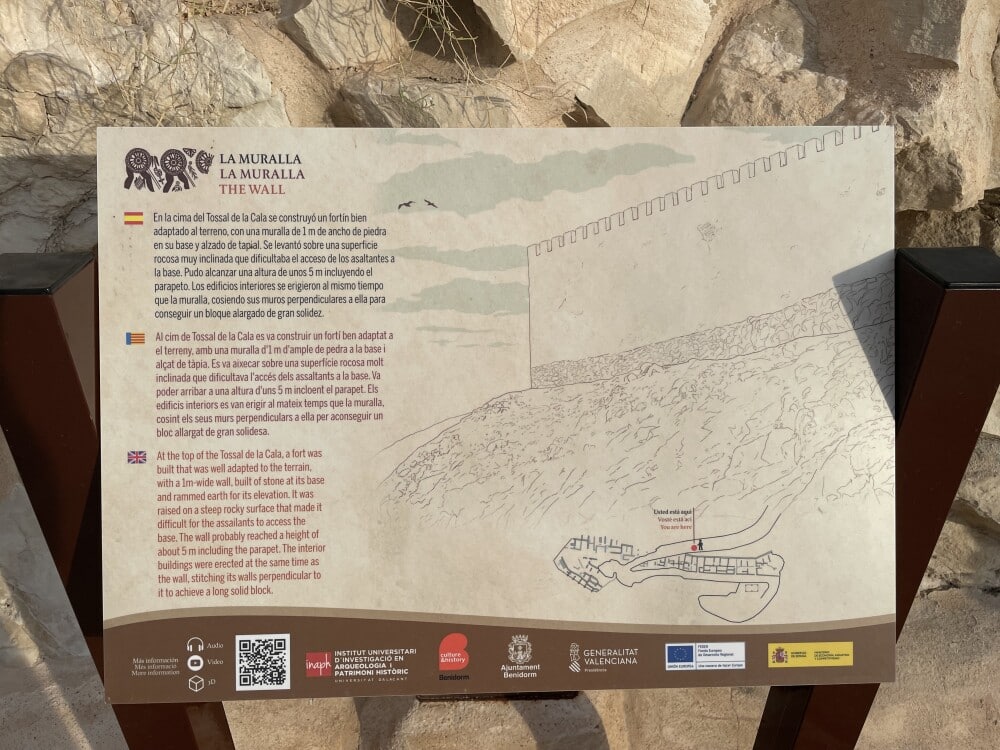
During the Roman era, Benidorm was part of trade routes and later, the Arab influence left significant traces in the culture and architecture, shaping the development of the city.
Part of this Roman legacy can be found in the site of Tossal de la Cala, which was part of a chain of Roman military enclaves.
Medieval History
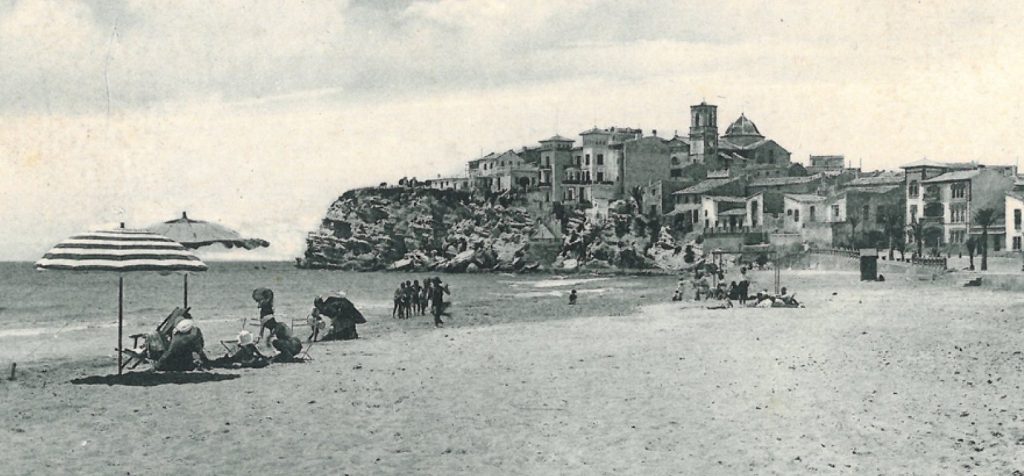
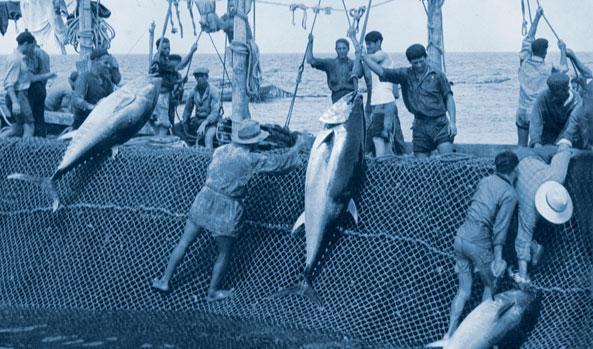
The medieval history of Benidorm marked its transformation as a municipality. The delivery of the Carta Pobla by the territorial lord Bernat de Sarrià in the 13th century, in May 1325, was the official birth of Benidorm as a municipal entity, granting it privileges and autonomy.
The reconquest of Benidorm by James I of Aragon (the Conqueror) was a crucial episode in the history of the region, marking the Christian domination and consolidating the presence of the Crown of Aragon in the area.
But Benidorm had a very small population, reaching in many periods to be unoccupied, largely due to lack of water. Here comes the real birth and sustained population growth.
The importance of the Sequia Mare, promoted by Beatriu Fajardo, was fundamental for the agricultural development of Benidorm. This irrigation network allowed the cultivation and expansion of agriculture, contributing to the economic and demographic growth of the region. This, together with the almadrava fishing system, turned Benidorm into a fishing village for several centuries.
20th CENTURY: Transformation into a Tourist Destination
The 20th century marked a radical change in the history of Benidorm. From a quiet community, it became a thriving tourist destination, attracted by its beautiful beaches and Mediterranean climate. It was the capital of middle-class tourism, mass tourism. Nightlife, family entertainment, unrestrained fun within the reach of all budgets.
Outstanding Figure: Don Pedro Zaragoza Orts
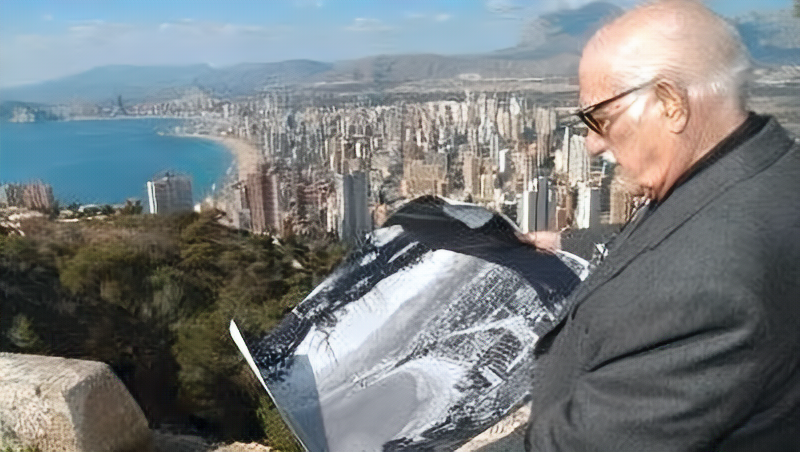
One of the most outstanding milestones in the modern history of Benidorm was the administration of Mayor Don Pedro Zaragoza, which began in the 1950s. His innovative vision and drive were fundamental to the development and projection of Benidorm as an international tourist destination.
Its famous Urban Development Plan, with well-laid out streets and wide avenues, still provides land for urban development for the next 30 years. His mandate meant the vertical model of construction, the promotion of the Levante beach area through the great avenue of the Mediterranean, the attraction of tour operators who were developers and owners of buildings at the same time, repopulation of the municipality with immigrant labor from all parts of Spain and the democratization of vacations in Spain.
He was one of the first marketing geniuses. Not only did he create the Benidorm Song Festival, but he also gave hundreds of bottles of “Sol de Benidorm” wine to personalities from all over the world, including the Queen of England. He put up posters in Europe showing the distance to Benidorm and invited a family of Norwegian Lapps, dressed in their regional costumes, to stroll around Benidorm for a whole week, and this news was picked up by all the Nordic press.

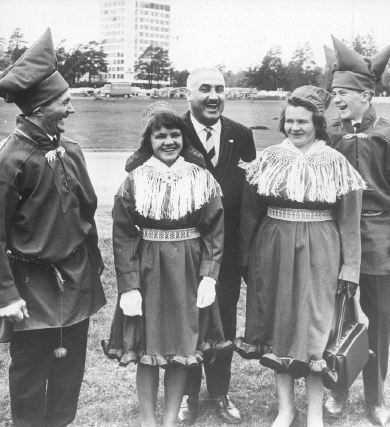
Zaragoza deployed bold strategies to attract investment and promote tourism, laying the foundations for the contemporary Benidorm we know today. His visionary leadership and initiatives transformed the city into a world-renowned tourism reference.
International Song Festival of Benidorm
The Benidorm Song Festival, inaugurated in 1959, became an internationally renowned musical event. Some of its most illustrious winners were:
- Raphael (1959): The iconic Spanish singer won the festival in its first edition, establishing himself as a leading figure in music.
- Nino Bravo (1969): His victory in the contest propelled his career to fame, making him a reference in Spanish music.
- Karina (1971): This Argentine singer and actress, a winner at the festival, left a lasting mark on the Spanish music industry.
- Julio Iglesias (1968): The renowned Spanish singer, although he did not win the festival, his participation was a milestone in his career, projecting him to international success.
The festival became a showcase for emerging and established artists, boosting careers and promoting musical diversity in Spain. His legacy lives on as an integral part of Benidorm’s rich cultural history. Now we enjoy the Benidorm Fest, a contest to choose the Spanish representative for Eurovision.
History of the Bikini in Benidorm
Benidorm played a key role in popularizing the bikini in Spain in 1953, when the first bikini beauty contest was held on the beach, boosting its acceptance and turning Benidorm into a symbol of fashion liberation. There is a short film on Youtube called“Bikini” about this story.
Benidorm Castle

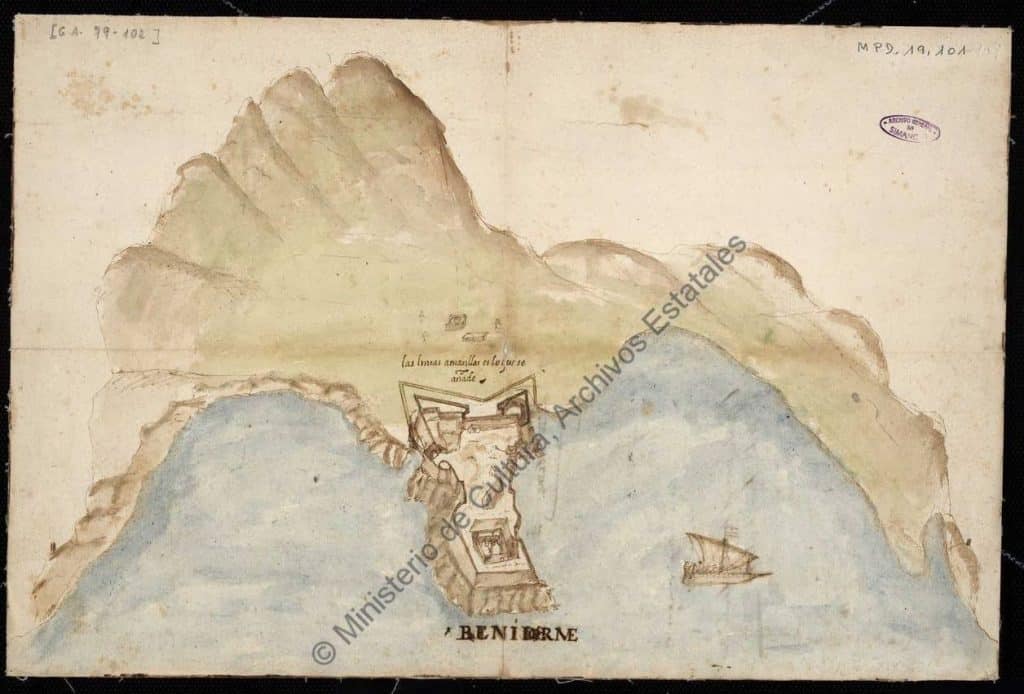
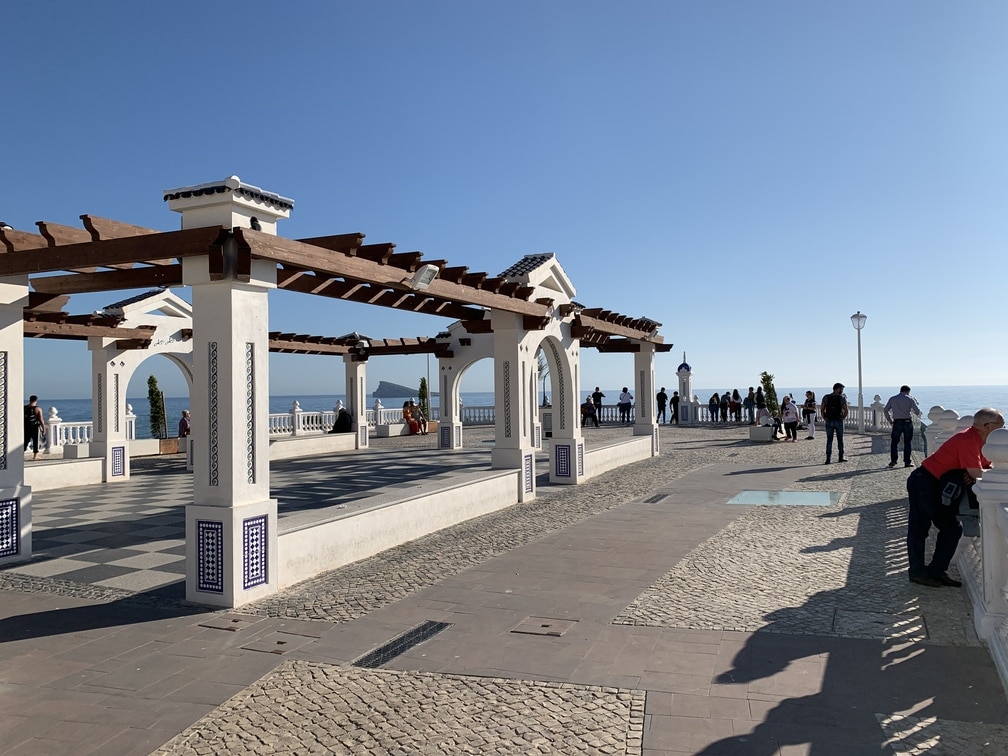
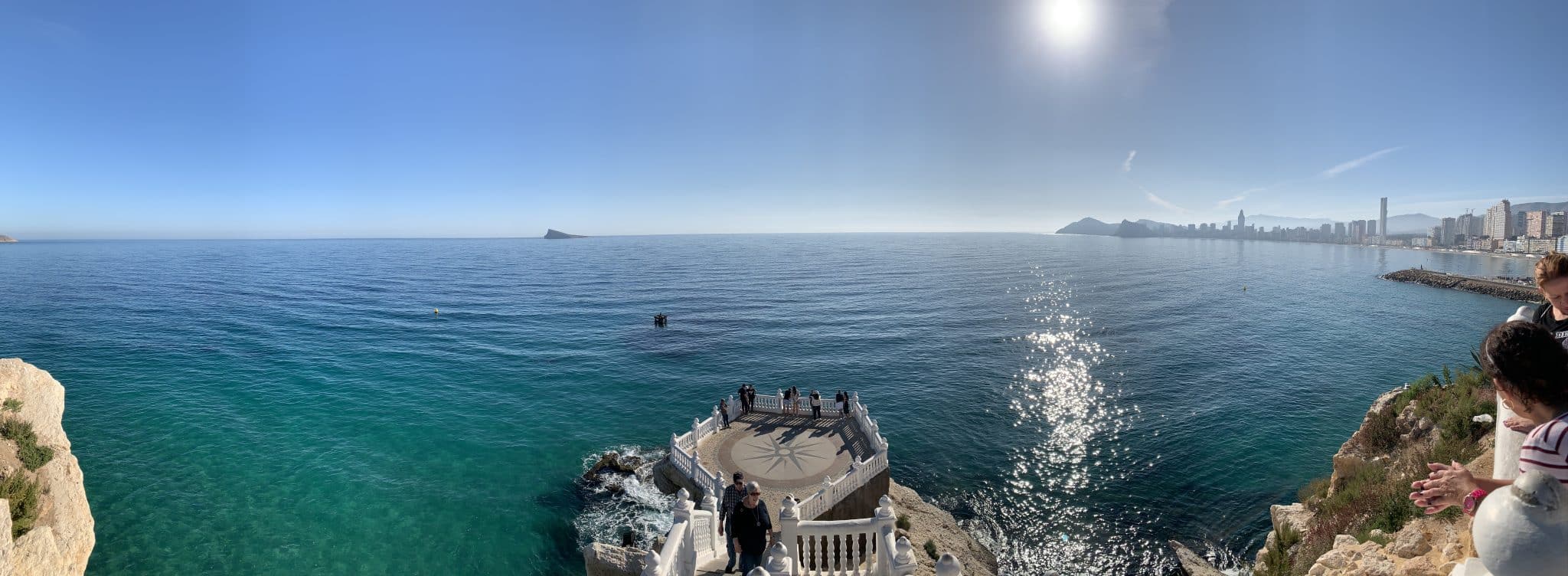
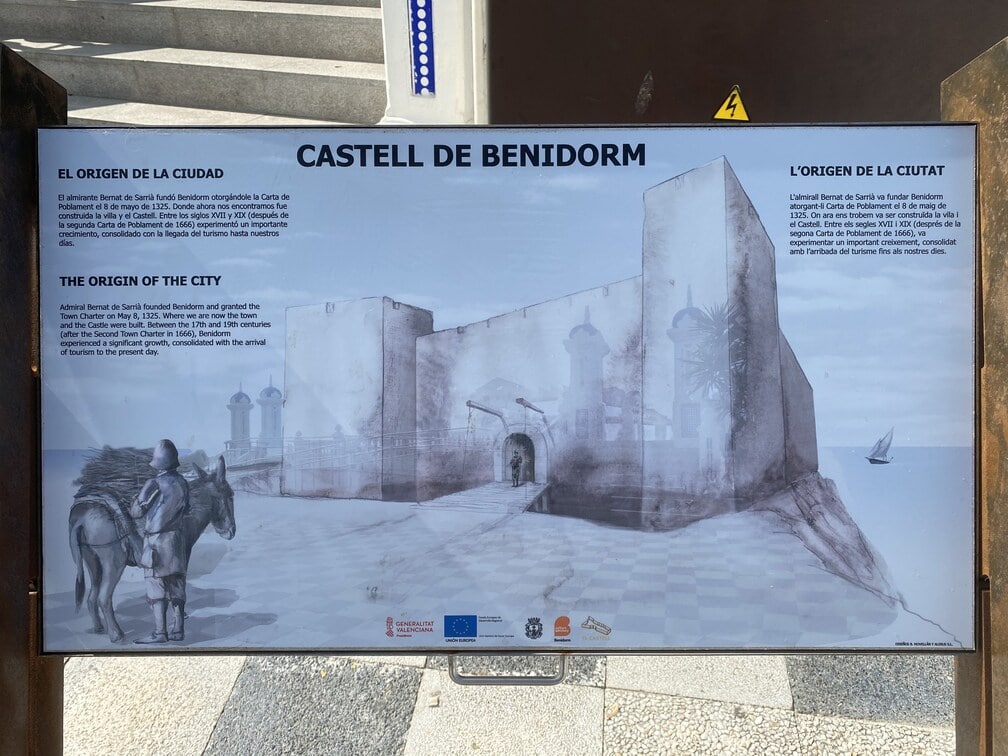
The city’s iconic castle, with its Moorish origins, has witnessed the history of Benidorm. Located at the top of the hill, it offers breathtaking views and is a reminder of its medieval past. The castle was destroyed by the English after the Napoleonic period.
Architecture in the History of Benidorm
The skyline of Benidorm is a testament to its progress. The construction of skyscrapers and landmark buildings has redefined its urban profile.

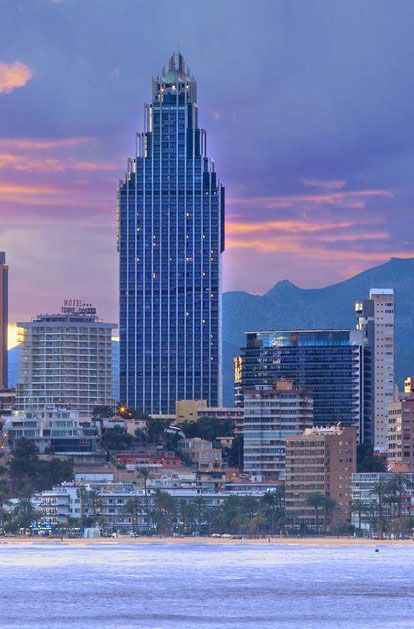
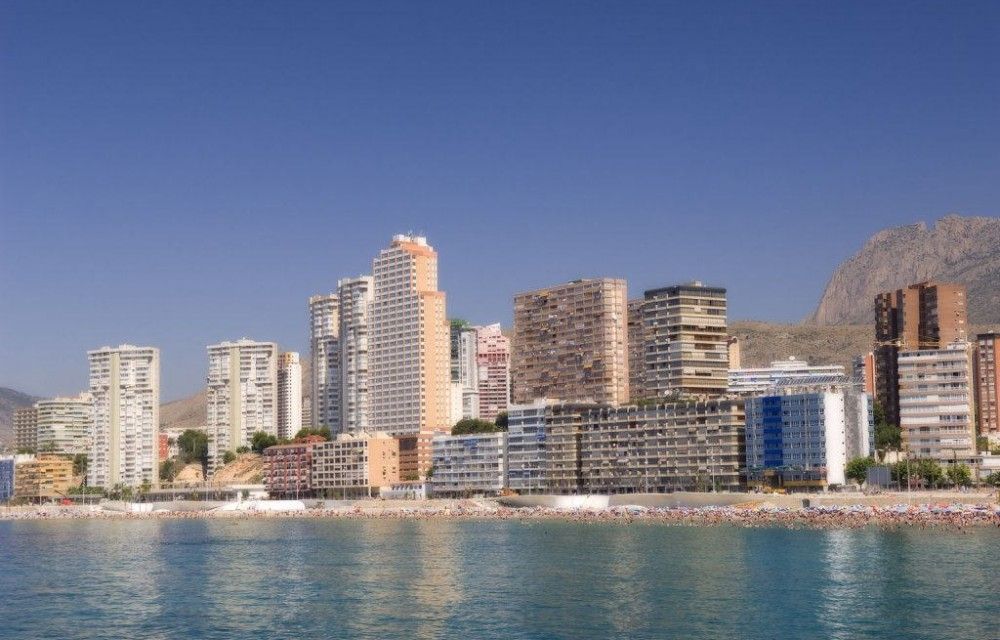
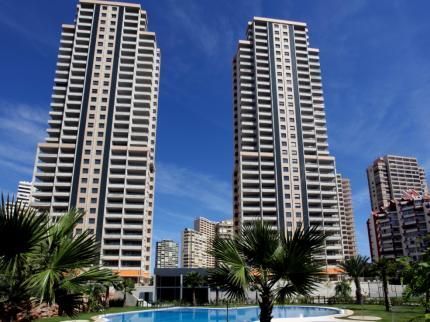
Festivities and Traditions
Local festivities, rooted in history and culture, attract visitors from all over the world. Events such as patron saint festivals and traditional celebrations are an integral part of the city’s identity.
Patron Saint Festivities in Honor of the Virgen del Sufragio
The Fiestas Mayores Patronales of Benidorm pay tribute to the Virgen del Sufragio, patron saint of Benidorm. Legend has it that on March 16, 1740, sailors brought a drifting, unmanned boat to shore. Inside there is an image of a Virgin with a child. Fearing that it was infected with the plague, the authorities forced the entire boat to be burned. After this, the children are allowed to look for nails and irons among the remains, but they find the image of the Virgin intact.
Social and Demographic Changes
The growth of tourism brought with it changes in the social and demographic structure of Benidorm. Multiculturalism became a distinctive feature of the community.
Benidorm Actual
Contemporary Tourism
Today, Benidorm is a world-renowned tourist destination. Its beaches, nightlife and entertainment offerings continue to attract visitors from around the globe.
Urban Development
The city continues to evolve with sustainable urban projects and infrastructure improvements to maintain its tourist attractiveness.
Challenges and Future Prospects
Despite its success, Benidorm faces challenges such as tourism sustainability and the preservation of its historical heritage in an ever-changing world. Benidorm was named the world’s first Smart Tourism Destination.
Conclusion
Benidorm’s history is a journey that spans millennia, from its prehistoric roots to its position as a modern tourist destination. Its evolution and adaptation over the years make it an emblematic place that reflects the fusion of past, present and future.
FAQs
What is the best time to visit Benidorm?
- Spring and autumn are usually ideal due to the mild climate and fewer tourists.
What cultural activities can be enjoyed in Benidorm?
- Music festivals, gastronomic events and exhibitions are part of the city’s cultural offerings.
How many inhabitants does Benidorm have?
- Census according to INE, 69,738 in 2022. It can reach floating population peaks, with tourists, of up to 400,000 people.
How has tourism affected the local lifestyle in Benidorm?
- Tourism has contributed to cultural and economic diversification, transforming local lifestyles.
What are the environmental challenges facing Benidorm?
- Sustainable tourism management and preservation of the natural environment are key challenges for the city.

